How to replace a lawn mower recoil starter on an OHV engine
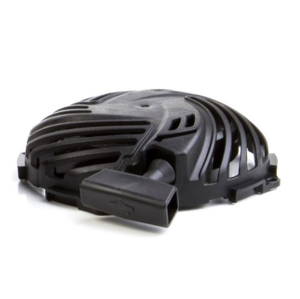
The step-by-step instructions in this lawn mower repair guide explain how to replace a recoil starter on a lawn mower that has an overhead valve (OHV) engine. If recoil starter rope doesn't retract, it's likely the recoil spring is broken. Replacing just the spring is difficult; the best way to repair a recoil starter is to replace the entire assembly with a manufacturer-approved replacement part.
This repair procedure works for replacing the recoil starter on common Briggs & Stratton OHV engines that power Craftsman, MTD, Husqvarna, Cub Cadet, Toro, Troybilt, Snapper, Murray and Ariens walk-behind lawn mowers.
If you have an older lawn mower model with a flathead engine, see How to Replace a Lawn Mower Recoil Starter on a Flathead Engine.
This video explains how to replace the recoil starter on a walk-behind engine with an OHV engine.
Instructions
- 02.
Disconnect the spark plug wire
Wear work gloves to protect your hands.
Disconnect the spark plug wire from the spark plug.
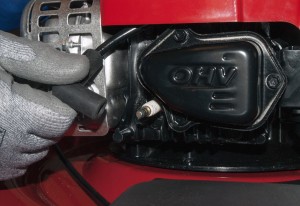
PHOTO: Disconnect the spark plug.
- 02.
Remove the blower housing
Release the starter rope from the lawn mower handle.
Remove the screws from the blower housing.
Pull the blower housing off the engine.
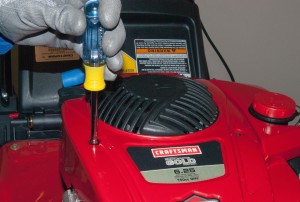
PHOTO: Remove the blower housing screws.
- 03.
Remove the recoil starter
Snap the recoil starter guard out of the blower housing retainer clips and remove the recoil starter guard.
Release the recoil starter from the blower housing retainer clips and remove the recoil starter from the blower housing.
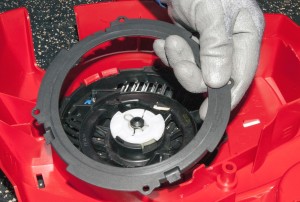
PHOTO: Remove the recoil starter guard.
- 04.
Install the new recoil starter
Position the new recoil starter in the blower housing and snap recoil starter into the blower housing retainer clips.
Reinstall the recoil starter guard by snapping it into the blower housing retainer clips.
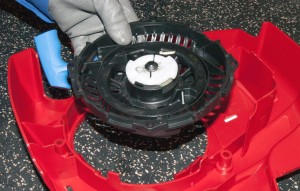
PHOTO: Install the new recoil starter.
- 05.
Reinstall the blower housing
Position the blower housing on the top of the engine and line up the mounting holes.
Reinstall the mounting screws.
Reconnect the starter rope to the mower handle.
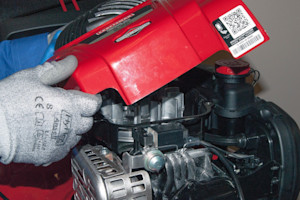
PHOTO: Reinstall the blower housing.
- 06.
Reconnect the spark plug wire
Connect the spark plug wire to the spark plug.
Symptoms for gas walk-behind mowers
Choose a symptom to see related walk-behind mower repairs.
Main causes: engine needs tune up, dirty or clogged carburetor, damaged flywheel key…
Main causes: uneven wheel height settings, damaged wheel, dull or damaged cutting blade…
Main causes: damaged cutting blade, loose cutting blade, damaged flywheel key, engine needs tune up…
Main causes: stale gas, engine needs tune up, bad spark plug, dead battery, bad recoil starter, faulty safety switch, ba…
Main causes: dirty carburetor, bad spark plug, clogged air filter, engine choke problems, clogged gas cap vent…
Main causes: drive control cable failure, worn or broken drive belt, bad transmission, broken drive wheel…
Repair guides for gas walk-behind mowers
These step-by-step repair guides will help you safely fix what’s broken on your walk-behind lawn mower.
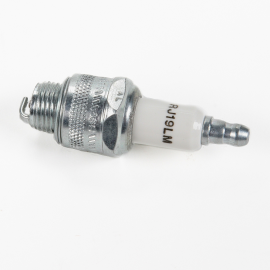
How to replace a lawn mower spark plug
Take a few minutes to replace the spark plug during your lawn mower's annual tune-up or if the spark plug is burnt or cr…

How to replace a lawn mower blade
Check your lawn mower blade regularly and replaced it if it's bent or damaged. …
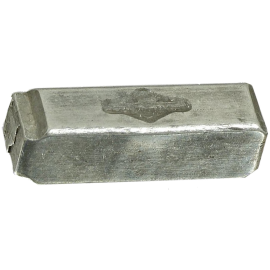
How to replace a lawn mower flywheel key on a flathead engine
When you hit a hard object with your mower, the flywheel can shear to protect more expensive components. Learn how to re…
Effective articles & videos to help repair your walk-behind mowers
Use the advice and tips in these articles and videos to get the most out of your walk-behind lawn mower.

Learn about all the convenient features on our Sears PartsDirect website that make your parts purchases easier.…
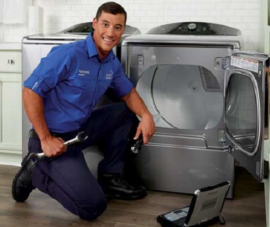
Learn about Sears Technical Institute and the advanced technical content being developed for aspiring appliance techs.…

Get answers to frequently asked questions about Sears and Sears PartsDirect.…